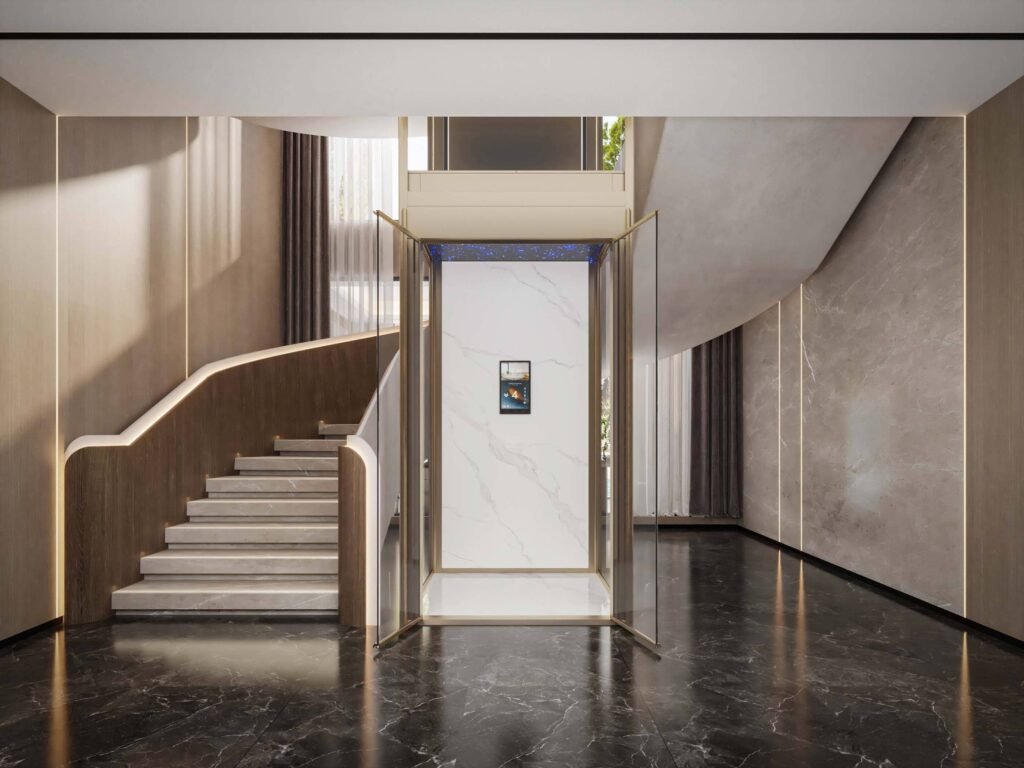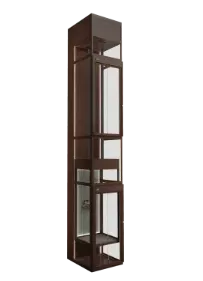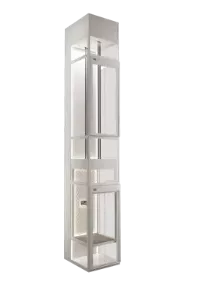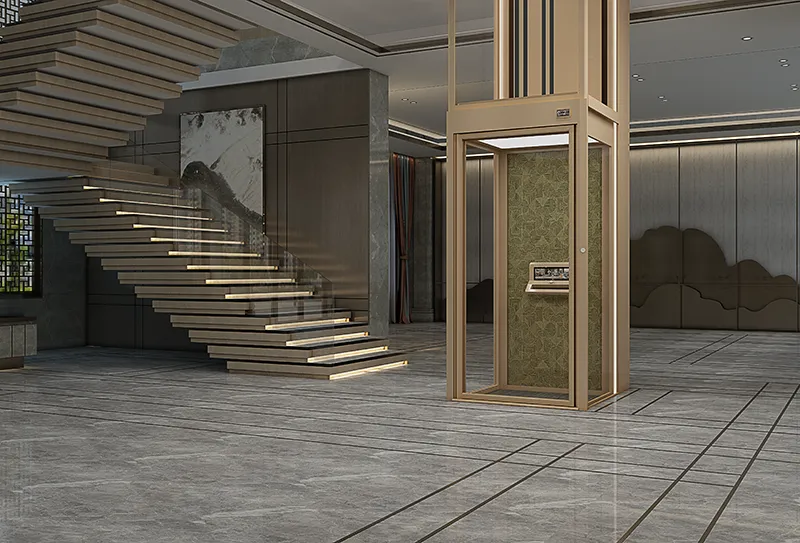1. Shaft Location and Space Planning
Where you place the elevator shaft and how much space you allocate directly affect the elevator’s size and door dimensions. A smart option is to install the elevator under the staircase, integrating it with the stairs. Here are three key things to keep in mind:
- Location Options: You can place the elevator under the stairs, in a corner, or as an external add-on. Just avoid putting it in the middle of a hallway where it’ll block the way—that’s a bad call.
- Sizing It Up: Figure out the shaft width based on the door opening size, and use the top floor’s height to determine the cabin height. For weight capacity, go for 3–4 people, around 400kg, with a cabin size of about 0.8–1.2 square meters.
- Style and Design: Pick a style that matches the shaft environment and your personal taste. Cost and installation complexity come next. Generally, a sealed shaft pairs with a sealed cabin, while a glass shaft looks great with a glass cabin. You can also mix it up with three-sided glass or partial glass for a fun, customized vibe.

2. Functionality and Safety Must-Knows
Home elevators are used by all sorts of people, many of whom don’t know much about elevators and don’t have a dedicated elevator technician on call. Still, safety can’t take a backseat. Even though it’s a home elevator, it’s best to think of it like a commercial passenger elevator when it comes to features and safety measures. Here’s the deal:
- Door Types: There are two main elevator door options—automatic or manual. Both need an electromechanical interlock to prevent the elevator from moving when the door is open or the door being opened when the elevator isn’t there. This avoids accidents.
- Collision Protection: Some foreign two-story home elevators don’t have shafts or doors, but they still need safety measures to prevent collisions. Installing a light curtain is a must to avoid friction, bumps, or pinching hazards.
- Manual Flat Doors: If the cabin doesn’t have a door, like with a manual flat-door design, you absolutely need a light curtain to prevent any collision or pinching risks.





